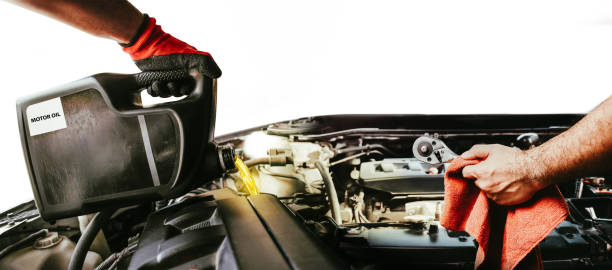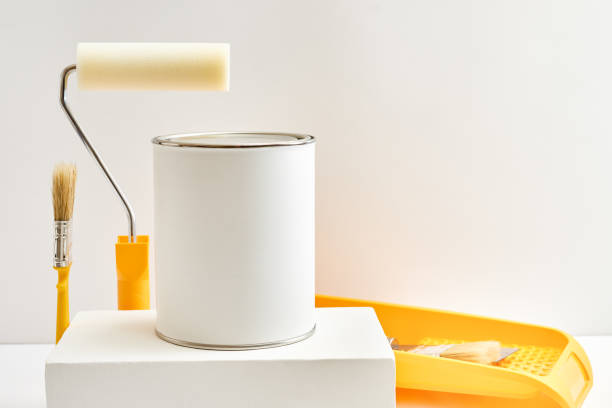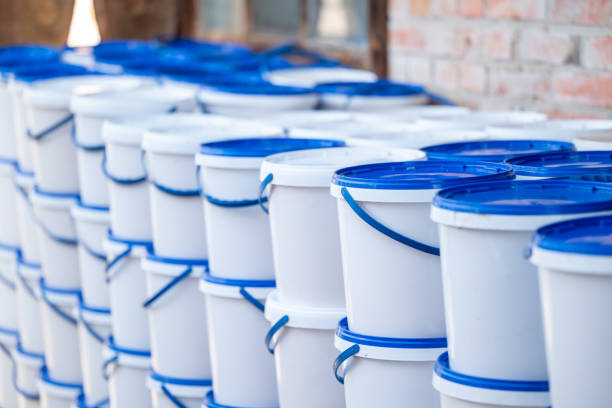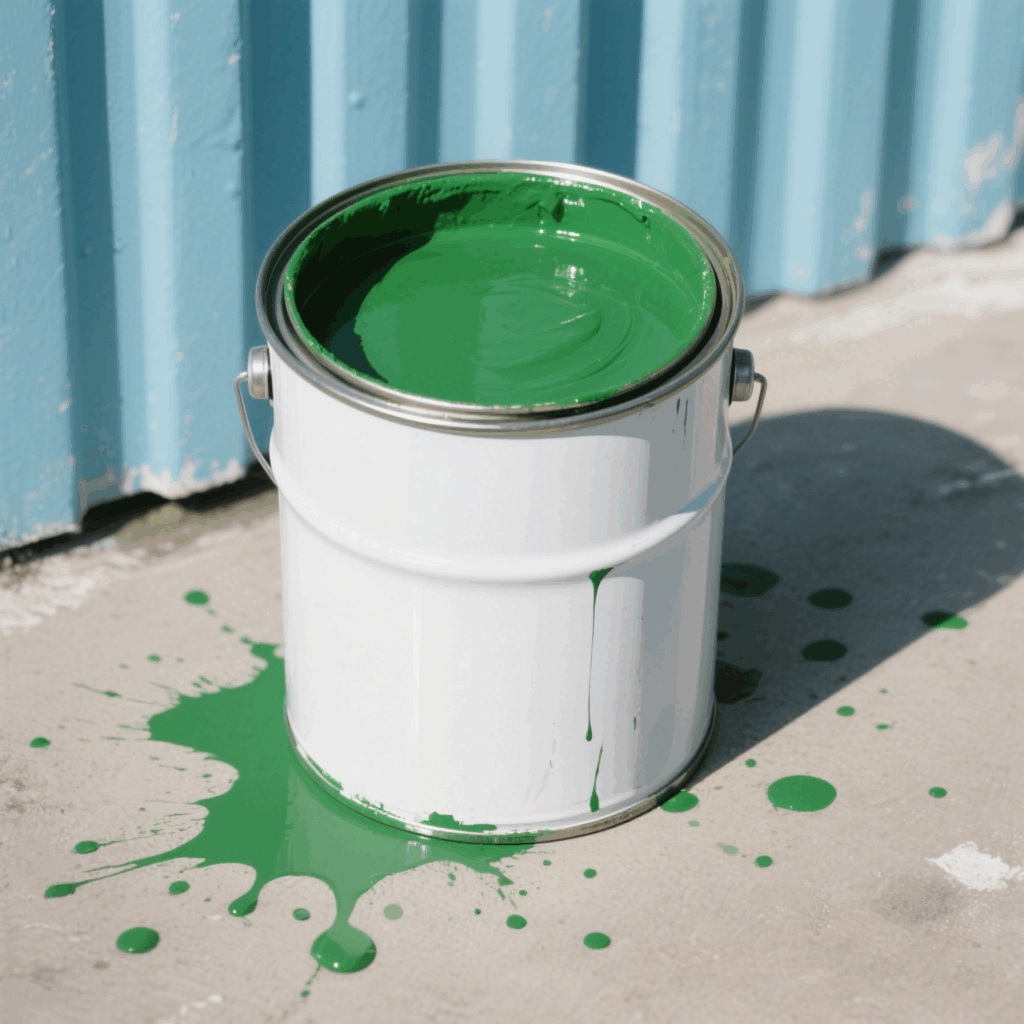It’s a scenario many of us have faced. Maybe the low oil pressure light flickered on during a drive, or perhaps you remembered you haven’t checked the oil in a while right after arriving home from a long trip. You pop the hood, feel the heat radiating from the engine block, and the question hits you: Can I actually put oil in my engine while it’s this hot?
It seems like a simple question, but like many things with car maintenance, the answer isn’t just a straightforward “Sí” o “no.” There’s nuance involved, considerations for safety, and best practices that ensure you’re doing right by your vehicle. As someone who’s pondered this exact question while staring at a steaming engine, I wanted to dive deep, explore all the angles, and create a definitive guide to solve this common dilemma once and for all.
The Short Answer: Sí, But…
Technically, Sí, tú can add oil to a hot engine. Modern engine oils are specifically designed to withstand extremely high operating temperatures (often well over 100∘C o 212∘F). Adding room-temperature or even cool oil (from your garage shelf) in the relatively small quantities needed for a top-up won’t usually cause catastrophic thermal shock to the massive, hot metal engine block.
Sin embargo, just because you can doesn’t always mean it’s the best o safest way. There are significant caveats, primarily concerning seguridad y accuracy.
When is the Ideal Time to Check and Add Engine Oil?
The consensus among mechanics and automotive experts is that the ideal time to check your oil level is when the engine is warm, but not scorching hot, and has been turned off for about 5-15 minutes.
Here’s why this “warm and settled” approach is preferred:
- Accuracy: When your engine is running, oil is actively circulating, lubricating all the moving parts. If you check the dipstick immediately after shutting the engine off, much of the oil will still be in the upper parts of the engine and hasn’t had time to drain back into the oil pan (sump) at the bottom. This will give you an artificially low reading, potentially leading you to overfill the engine if you add oil based on this inaccurate measurement. Waiting 5-15 minutes allows most of the oil to settle back into the pan, giving you a much more accurate reading on the dipstick.
- Seguridad: While still warm, the engine components won’t be at their absolute peak operating temperature after sitting for a few minutes. This slightly reduces the immediate risk of severe burns compared to working on an engine that was just turned off after heavy use. Key components like the exhaust manifold can remain dangerously hot for much longer, however.
- Oil Viscosity: Warm oil flows more easily than cold oil. While this is more critical for changing aceite (to ensure complete draining), checking the level when warm ensures the oil on the dipstick is representative of its operating state. Checking stone-cold oil (P.EJ., first thing in the morning) is also accurate for level after it has settled overnight, but the “warm and settled” method is often more practical as people frequently check after a drive.
Entonces, the hierarchy looks like this:
- Best: Warm engine, turned off for 5-15 minutes.
- Bien: Cold engine (P.EJ., first thing in the morning before starting). The level reading will be accurate as all oil has drained back.
- Okay, but with Caution: Hot engine (just turned off), provided you wait a few minutes for settling and are extremely careful.
- Not Recommended: Checking while the engine is running (dangerous and inaccurate).
Safety First! Working Around a Hot Engine is No Joke
This is the most critical part if you do decide to add oil when the engine is genuinely hot. Engine bays contain numerous components that reach incredibly high temperatures.
Potential Hazards:
- Exhaust Manifold: Often made of cast iron, this gets extremely hot and can cause instant, severe burns. It can stay hot long after the engine is off.
- Radiator and Hoses: Contain hot coolant under pressure. Avoid touching.
- Engine Block and Cylinder Head: The main metal parts of the engine retain significant heat.
- Oil Filler Cap and Dipstick: Can be hot to the touch. Hot oil might splash out when opening the cap.
- Other Components: Alternator, belts, pulleys, and various sensors can also be hot or pose entanglement risks if the engine were accidentally started.
Safety Precautions Checklist:
- Turn the Engine OFF: Never attempt to add oil while the engine is running. Ensure the keys are out of the ignition.
- Park on Level Ground: This is crucial for an accurate oil level reading and prevents the car from potentially rolling. Engage the parking brake.
- Allow Some Cooling Time: Even if you can’t wait the ideal 10-15 minutes, letting it sit for even 2-5 minutes can slightly reduce the temperature of some surfaces and allow oil to start draining back.
- Wear Protective Gear:
- Gloves: Heat-resistant work gloves are highly recommended.
- Eye Protection: Safety glasses can protect your eyes from potential splashes.
- Long Sleeves: Protect your arms from accidental contact with hot surfaces.
- Be Aware of Your Surroundings: Know where the hottest parts (like the exhaust manifold) are and keep your hands and arms clear.
- Remove Loose Clothing/Jewelry: Ties, scarves, necklaces, or loose sleeves can get caught in engine parts if it were to somehow start, or simply get dirty.
- Open the Oil Filler Cap Slowly and Carefully: Use a rag or glove to grip the cap. Turn it slowly to release any potential pressure before fully removing it. Angle your face away as you open it.
- Use a Funnel: Always use a clean funnel to add oil. This prevents spills onto hot engine components, which can create smoke, unpleasant smells, and even a potential fire hazard (though aceite de motor has a relatively high flash point, spilled oil on a very hot exhaust manifold is still risky).
Recordar: Burns from hot engine components can be severe. If you are uncomfortable working around the hot engine, wait until it cools down further. There’s rarely a situation so urgent that you must add oil to a scalding hot engine immediately.
Adding Oil vs. Changing Oil: A Key Distinction
It’s important to differentiate between adding a small amount of oil to top it off and performing a full oil change.
- Adding Oil (Topping Off): This involves adding maybe half a quart/liter or less to bring the level from the “Add” mark up to the “Full” mark on the dipstick. Adding this relatively small volume of cooler oil to the large volume of hot oil already in the sump is generally considered safe and poses minimal risk of thermal shock.
- Changing Oil: This involves draining todo the old oil out and replacing it with several quarts/liters of new oil. Mechanics often prefer to drain the oil when it’s warm because warm oil flows out more quickly and completely, carrying more contaminants with it. Sin embargo, draining large quantities of hot oil is significantly more dangerous due to the risk of large spills and severe burns. Refilling with several quarts of cold oil into a very hot, vacío engine might theoretically pose a slightly higher (though still generally low) risk of thermal stress compared to just topping off, but the main concern with hot oil changes is the draining process.
Por lo tanto, the advice and precautions for adding oil to a hot engine are focused mainly on the immediate safety of working around hot components and ensuring an accurate level check, rather than significant concerns about damaging the engine with the new oil itself.
Step-by-Step Guide: How to Safely Add Oil to a Warm/Hot Engine
Okay, let’s walk through the process, assuming your engine is warm or hot, and you’ve decided it’s necessary to add oil now, following safety guidelines.
- Park Safely: Ensure your car is on a level surface and the parking brake is engaged.
- Turn Off Engine: Make sure the engine is completely off.
- Wait (If Possible): Allow the engine to sit for at least 5-10 minutes. This helps with accuracy and slightly reduces temperatures. Use this time to gather your oil, a clean funnel, rags/paper towels, and put on your protective gloves and eyewear.
- Open the Hood: Securely prop it open.
- Locate the Dipstick: This usually has a brightly colored (often yellow or orange) loop handle. If unsure, consult your owner’s manual.
- Check the Oil Level (Initial Check):
- Carefully pull the dipstick out completely. Be mindful it might be hot.
- Wipe the end clean with a rag or paper towel.
- Fully re-insert the dipstick, making sure it goes all the way in.
- Pull it out again carefully.
- Hold it horizontally or slightly angled down to prevent oil from running up the stick.
- Observe the oil level. There will be markings like ‘MIN’/’MAX’, ‘ADD’/’FULL’, or a cross-hatched area. Note where the oil film ends.
- Locate the Oil Filler Cap: This cap usually has an oil can symbol on it. Again, check your owner’s manual if unsure. It’s often on the valve cover on top of the engine.
- Remove the Filler Cap: Using a gloved hand or a rag, slowly twist the cap counter-clockwise to remove it. Place it somewhere clean where it won’t get lost or contaminated with dirt.
- Insert the Funnel: Place a clean funnel securely into the filler opening. Ensure it’s stable.
- Add the Correct Oil: Double-check that you have the manufacturer-recommended oil type and viscosity (P.EJ., 5W-30, 0W-20 – check your owner’s manual!).
- Add Oil Incrementally: This is crucial! Don’t just dump a whole quart/liter in. If the dipstick shows the level is at the ‘ADD’ or ‘MIN’ mark, start by adding about half a quart (or half a liter). The distance between ‘MIN’ and ‘MAX’ on most dipsticks represents approximately one quart (or one liter), but it varies by car.
- Wait a Moment: Allow a minute or two for the added oil to flow down into the oil pan.
- Re-Check the Level: Remove the funnel, re-insert the dipstick, wipe it, re-insert it fully, and pull it out again to check the new level.
- Add More if Needed: If the level is still below the ‘FULL’ or ‘MAX’ mark, add a smaller amount (P.EJ., a quarter of a quart/liter) and repeat the checking process. Sneak up on the correct level. It’s much easier to add a little more than it is to remove excess oil.
- Stop at Full: Do NOT fill beyond the ‘FULL’ or ‘MAX’ mark.
- Replace Cap and Dipstick: Once the level is correct, remove the funnel, securely replace the oil filler cap (turn clockwise until tight), and ensure the dipstick is fully re-inserted.
- Clean Up: Wipe away any minor drips or spills with a rag. Dispose of oily rags properly.
- Wash Your Hands: Even if you wore gloves, wash your hands afterward.
Why Using the Bien Oil Matters More Than Temperature
While we’re focused on the timing of adding oil, it’s vital not to forget the tipo of oil. Using the wrong oil can cause far more long-term damage than adding oil at a less-than-ideal temperature.
- Viscosidad: This refers to the oil’s thickness and ability to flow at different temperatures. It’s represented by numbers like 5W-30, 0W-20, etc.. The ‘W’ stands for ‘Winter,’ indicating its cold-flow properties, while the second number indicates its viscosity at high operating temperatures. Using the wrong viscosity can lead to inadequate lubrication, increased engine wear, and reduced fuel efficiency.
- Oil Type: Conventional, Synthetic Blend, or Full Synthetic? Modern engines, especially turbocharged or high-performance ones, often require synthetic oil due to its superior stability at high temperatures, better flow in cold weather, and enhanced cleaning properties.
- Specifications: Look for API (American Petroleum Institute) or ILSAC (International Lubricant Specification Advisory Committee) ratings (like API SP or ILSAC GF-6) specified in your manual. These ensure the oil meets current performance standards.
Siempre, siempre, siempre consult your vehicle’s owner’s manual to find the exact type, viscosity, and specification of oil required for your engine. Keep a quart/liter of the correct oil in your trunk for emergencies – this avoids having to guess or use the wrong type if you need a top-up on the road.
The Dangers Lurking Beneath: Overfilling and Underfilling
Getting the oil level right is crucial. Both too much and too little oil can harm your engine.
Consequences of Overfilling:
- Oil Foaming: If the oil level is too high, the crankshaft whipping through it can churn the oil into a froth, like whisking egg whites. Aerated, foamy oil lubricates very poorly.
- Increased Oil Pressure: Can potentially strain seals and gaskets, leading to leaks.
- Oil Consumption/Burning: Excess oil can be forced past piston rings or overwhelm the crankcase ventilation system, leading to blue smoke from the exhaust and potential damage to the catalytic converter.
- Reduced Performance: The increased drag from the crankshaft hitting the oil can slightly decrease engine power and fuel economy.
Consequences of Underfilling (Running Low):
- Increased Friction and Wear: Insufficient oil means metal parts don’t have an adequate lubricating film between them, leading to rapid wear.
- Overheating: Oil plays a significant role in cooling engine components. Low oil levels reduce this cooling capacity, increasing the risk of overheating.
- Oil Starvation: During cornering, braking, or acceleration, the remaining oil might slosh away from the oil pump pickup tube, temporarily starving the engine of lubrication. This can cause severe damage very quickly.
- Complete Engine Failure: Running an engine completely out of oil will lead to catastrophic seizure and destruction.
This is why regularly checking your oil level (ideally every couple of fuel fill-ups or at least once a month) is one of the most important pieces of preventative maintenance you can do.
Preguntas frecuentes (Preguntas frecuentes)
Let’s tackle some common related questions:
- Q1: Is it better to add oil when the engine is hot or cold?
- A: El ideal time is when the engine is warm (not scorching hot) and has been off for 5-15 minutes to allow the oil to drain back into the pan for an accurate reading and slightly safer handling. Checking/adding when cold (after sitting overnight) is also accurate and safe. Adding when scorching hot is possible but less ideal due to safety risks and potential inaccuracy if you don’t wait for the oil to settle.
- Q2: What happens if I add cold oil to a hot engine? Is there a risk of cracking the block?
- A: For the small amount of oil needed for a top-up (usually a quart/liter or less), the risk of causing thermal shock significant enough to damage major engine components like the block or head is extremely low. Engine oil is designed to handle massive temperature swings, and the large thermal mass of the engine block dissipates the temperature difference quickly. While theoretically possible under extreme and unlikely circumstances, it’s not a practical concern for routine top-offs.
- Q3: How long exactly should I wait after driving to add oil?
- A: 5-15 minutes is a good rule of thumb. Less than 5 minutes, and the reading might be inaccurately low. Much longer, and the engine cools completely (which is also fine for checking/adding, just not “warm”). The key is allowing time for the oil to drain back to the sump.
- Q4: Can I check the oil level immediately after turning the engine off?
- A: It’s not recommended for accuracy. Much of the oil will still be in the upper engine, giving a false low reading. Wait at least 5 minutes.
- Q5: What are the signs I definitely need to add oil?
- A: The primary sign is the oil level being at or below the ‘ADD’ or ‘MIN’ mark on your dipstick. Another urgent sign is the oil pressure warning light illuminating on your dashboard (the icon often looks like an old-fashioned oil can). If this light comes on while driving, pull over safely as soon as possible, turn off the engine, wait a few minutes, and check the oil level. Do not continue driving with the oil pressure light on, as severe engine damage can occur very quickly.
- Q6: I spilled a little oil on the engine while filling. Is that bad?
- A: Wipe it up as best you can with a rag. Small amounts will likely just burn off, creating some smoke and smell for a short time. A larger spill, especially onto the very hot exhaust manifold, carries a small fire risk and should be cleaned thoroughly. Using a funnel prevents most spills.
Conclusión: Add Oil Wisely, Drive Confidently
Entonces, can you put oil in a hot car engine? Sí, you can, but it’s best done with care and preferably after letting the engine cool slightly from its peak operating temperature. The ideal approach remains checking and adding oil when the engine is warm and has sat for 5-15 minutes, ensuring both accuracy and a greater margin of safety.
Always prioritize your safety by wearing gloves, being mindful of hot components, and opening the filler cap cautiously. Use the correct type and viscosity of oil as specified in your owner’s manual, and add it incrementally using a funnel to avoid overfilling. Regular oil level checks are fundamental to engine health, preventing the potentially catastrophic consequences of running too low.
By understanding the simple steps and precautions outlined here, you can confidently manage your engine’s oil level, hot or cold, keeping your car running smoothly and reliably for miles to come. Happy motoring!























